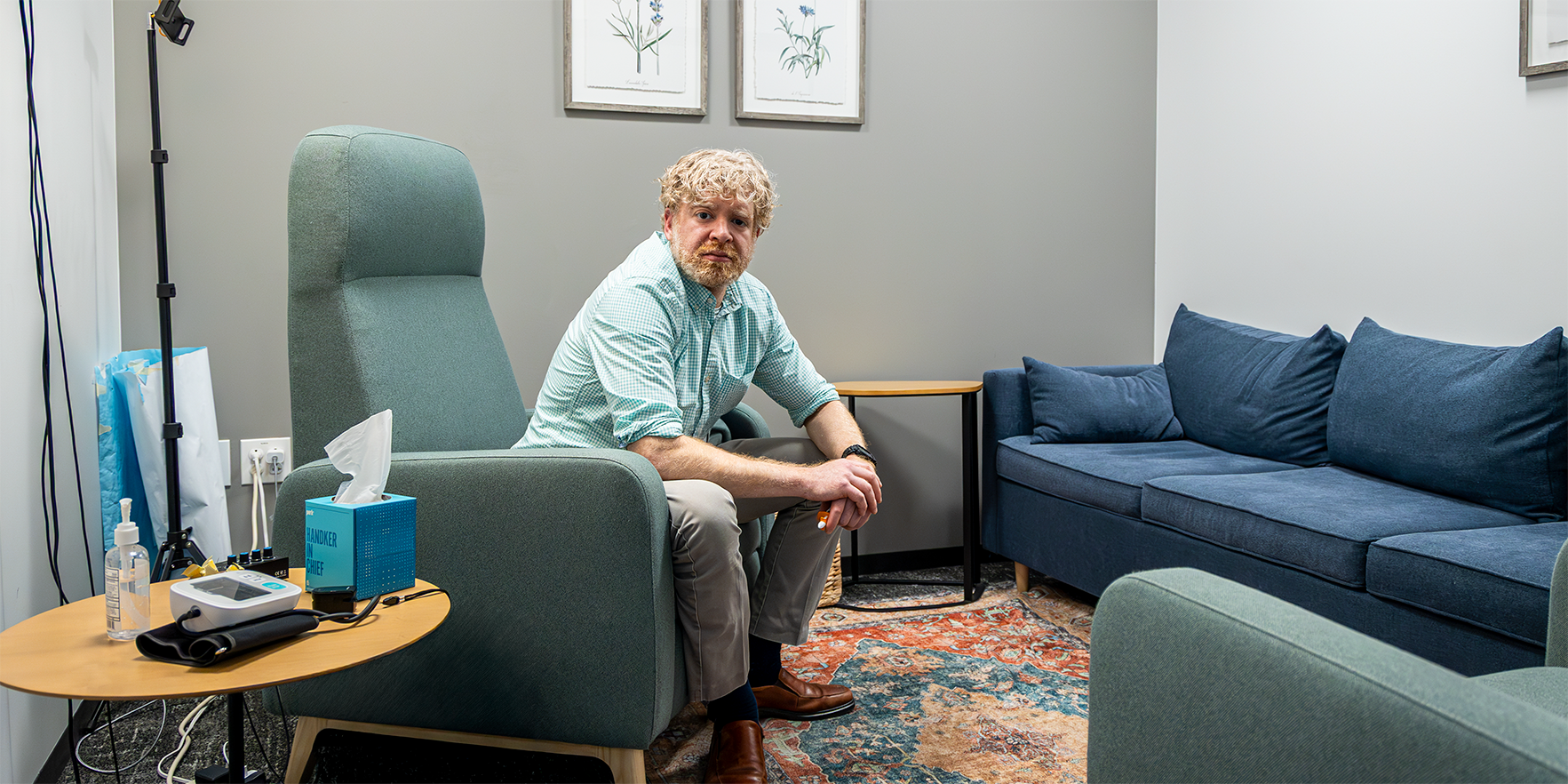There have been media reports about a worse-than-normal spring allergy season. Is that what you’re seeing?
I would say so. In general, you hear people say that every year is the worst allergy year, and in fact they’re right. Data have come out in recent years showing the impact of climate change on allergy patterns. With temperatures getting warmer, allergy season is lasting longer. We also know that with increased carbon dioxide exposure plants are able to make more pollen, and that the pollen they are making is actually more allergenic. We’re getting a longer season, you’re getting more pollen exposure and you’re getting exposed to more allergenic pollen than you did in the past. Consistently, year over year, you’re seeing worse and worse allergy seasons.
So, you are seeing this in your clinic?
We’re always busy, but certainly we have more patients coming in who are saying they’re having worsening allergy symptoms, or even patients who previously had no symptoms but now are developing symptoms. We know that with increased exposure, it can lead to this sensitization and the development of allergies as well.
What are the range of symptoms people are suffering from?
The most common allergy symptoms are eye and nose symptoms. That would be congestion or stuffy nose, runny nose, post-nasal drip, sneezing, and itchy, watery, red eyes. For patients who have asthma that’s triggered by allergies, their breathing could certainly worsen, and it could be harder for them to do some activities, especially outside. Some people can have skin reactions to allergies as well, such as rashes or hives.
What are some things people can do going about their daily lives to minimize allergies, alleviate symptoms or keep them at bay?
When it comes to allergy mitigation strategies, the idea is we want to keep things outside, outside. When you come in from being outside, you want to change your clothes, shower, make sure you’re getting all of that pollen off of you. You don’t want to wear shoes in the house that can track pollen into the home. Also, keep the windows shut in your house, especially your bedroom, so that pollen’s not coming and settling on your bed, couch or other places where we can get exposure to it. We don’t want people line-drying their clothes. You don’t want to be doing yard work if you are sensitized to these things either.
Could you walk me through what you tell a patient who is hard hit by allergies?
In addition to the mitigation strategies I mentioned, our main suggested medications are long-acting, non-sedating antihistamines as well as nasal steroids. The nasal steroids are usually the better option – they treat the inflammation in the nose, which subsequently reduces the symptoms I mentioned before. If you can’t tolerate a nasal spray or aren’t getting complete relief, then we can add on the oral antihistamine. A lot of people go straight for the oral antihistamine, but the thing to keep in mind is that it does not do a great job with nasal congestion. If that’s your primary symptom, you’re going to want to use the nasal steroid spray. Also, the generics are every bit as efficacious as the brand names.
We also recommend using nasal washes similar to a neti pot or a squeeze bottle, because not only does it rid your airway of all the allergens in your nose, but it also gets rid of the mucus. This way, when you do the nasal spray, it’s getting right to the nasal mucosa.
Do you advise any morning or evening routines of these kinds of therapies?
Typically, we lean toward the nighttime simply because some of these medications, while they’re not supposed to be sedating, still can be. That way, you wake up in the morning, and you’ve slept off the sedative aspect of the medication but still received the antihistamine benefits. But, with the crazy schedules people have these days, whatever time of day they can take the medicines, we’ll take it.
If patients have tried the over-the-counter medicines but are still struggling with allergies, is there a point you suggest shots or immunotherapies?
If you are not controlling your symptoms with either the nasal steroid spray or antihistamines, it’s a good opportunity to see an allergy specialist. We can do testing to find out what it is specifically that you’re allergic to so we can talk about strategies for certain seasons that might be worse for you than others. Also, that’s the information we would use to talk about allergy immunotherapy. There are two ways that is administered: One is allergy shots, and the other is sublingual allergy immunotherapy, which goes underneath your tongue.
Sometimes people don’t realize that allergy shots is quite the time commitment. We recommend that you’re on them for three to five years and it starts out as frequently as once a week. Then you could space it out eventually to once a month. I often have patients who come in and say, “I want the allergy shot.” I’m like, “Nope, not one shot, several shots.” If that’s a harder option for them, we have for some allergens, but not all of them, sublingual immunotherapy. We have it for grasses, weeds and dust mites. They can use the sublingual medicines at home. They put it under their tongue, let it dissolve, and it provides benefit during their peak season.
Are there any advantages to starting an allergy medication before an allergy season kicks in?
There are two ways to answer that question. One is if you are thinking about one of these sublingual immunotherapies, for example the grass sublingual, we recommend you start about eight to 12 weeks before the allergy season begins. The other thing is if you know every spring you are going to have a rough allergy season, it’s probably worthwhile to start your medicines sometime in February. That way, you’re not playing catch-up and trying to control the symptoms, but rather you have some protective effect from the start.
When people are outside doing activities in the yard or things they enjoy, is there anything they can do to minimize exposure to pollen?
You could mask when you’re outside to reduce your exposure. Primarily, I would suggest this if you are doing yardwork or things like where you know you’re going to have an increased exposure, but I don’t want people to feel like they’re obligated to wear a mask just to walk outside.
Also, if you see that it’s a high pollen-count day, maybe that would be a better day to not be outside. However, as allergists we don’t want people to feel that they can’t go outside, and they can’t do things they want to do.
We’re in the thick of spring and pollen counts are going crazy. But people often suffer from bad allergies in the fall as well. What’s happening with plants in the fall that causes another wave of allergies?
So here in Colorado, spring is our tree pollen season. That typically starts, depending on how mild or severe our winter is, at the beginning of March and it goes until about the end of May. Then our grass season kicks in, and it goes until about mid-August. That’s when our weed season kicks in, and it goes through the fall until the first two hard frosts. So in Colorado, we have a pretty prolonged allergy season – from March through October. When patients have those symptoms in the fall, it’s most likely a combination of either the tail end of the grass season or the start of the weed season that are causing those symptoms. Similar to everything we talked about with the spring, it would apply to the summer and fall as well.
With the increasing number of thunderstorms due to climate change, is it true that the storms can break up the pollen into smaller particles that can then lodge themselves deeper into the respiratory tract?
There have been reports of "thunderstorm asthma" where there is a spike in asthma exacerbations following major storms. The idea is that pollen particles are broken up during the storm, allowing them to deposit deeper into the lungs and cause inflammation, which subsequently leads to an exacerbation. We would still recommend the same day-to-day allergy management strategies we discussed and want to make sure patients with asthma are taking their medications routinely to control the underlying inflammation in their lungs.
This interview was edited for length and clarity.





